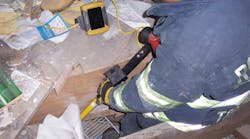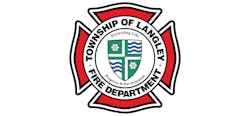The Initial Phases of Developing a Specialized Rescue Team
Last month we focused on the considerations for developing a technical rescue team. By asking ourselves a series of questions related to the idea of building a team we were able to make the determination if a team is a viable commodity in your community.
In this article, we will be looking at the various phases of developing a team. Once you have decided to move forward with your vision you must have an implementation plan in place in order to manage the teams growth.
There are four main phases that will be dealt with during your team’s development. Much of the content in these phases will be driven by the information you obtained from the questions you previously asked in the early planning stage of your mission. In this edition we will examine Phases 1 and 2.
Phase 1 – Community Risk & Rescue Needs Assessment
Risk assessment – This will be based on historical data from your community. Utilize your local emergency management office. These are the people with the data related to previous event within your community or region. The local newspaper and library are also great sources for archived data.
Analyze data – You will need to take the information gathered and develop a plan to demonstrate the likelihood of a technical rescue incident taking place in your community. This will also be a valuable tool in a later phase when it comes to developing your training plan. Basically you will want to put your initial efforts in training for the events with the highest potential in your community or region.
Establish risk thresholds – Weigh the potential risk to the community and the potential risk to emergency responders. Risks will vary in severity based on the individual response areas you target for your operations
Determine the type of team that is needed – Do you need a single or multi-discipline team? During your self-evaluation process this topic was part of your initial justification for moving forward with the development of a team. As you move forward with your team’s development, focusing on the “one step at a time” process is usually the most successful. Take your top priority of need and work on that discipline. When you have reached an initial goal or proficiency level in that specialty you can begin to move into other specialties. each team may view their desired level of certification differently. One team may stop at the operations level while the next may require technician level training for its members. As long as you follow your teams development plan and meet your local needs all is well.
Try to avoid doing too much at once. Even the most seasoned response teams had a learning curve in their early years of existence. You can look at existing teams as examples during your development however; to get to their level you must not skip the steps in the development phase or your end goals will never me meet.
Phase 2 – Planning
Develop through committee – Put together a committee that will take command and responsibility for the planning phase of your development. Create a business plan with definitive goals for your success. Establish a time frame for completion. Many adjustments will most likely happen along the path to completion, but without a schedule for completion you will most likely watch the months and years go by without achieving the success you had hoped for.
There are many areas to consider in the planning of a team so don’t try to tackle all of them at once. One of the best methods is to divide responsibilities up among the committee and have each of the sub-groups take ownership of their part of the project.
Areas to consider in the planning phase include:
- Personnel and staffing
- Equipment
- Vehicles/transportation
- Training
- Administrative support
- Political support
These items are a partial list of the many factors you will have to plan for in your development. Always remain open to the additional challenges you will come upon as you move forward with your program.
Determine current capabilities – Do an analysis of local assets, or as is often said “grab the low hanging fruit first”. You may have some of the needed equipment already available to you. In the team staffing area, you may discover that some of your potential members already have training in the areas that you will be targeting. By utilizing these preexisting talents you will enhance you initial start up times and see cost savings in the area of training during the team’s development. This existing talent can also be tapped into as a potential source of in house instructors which will be a major value in your long range training plan.
Prepare a concept of operations – This will provide you with a foundation to work from during your team’s growth. Put your plan in place early as it will identify how and what you will require to meet your goals. A well laid out plan will also be of great value when convincing others that you have a strong plan covering the multiple details required for a successful outcome.
Determine staffing needs – How many people will be needed? Staffing is sometimes derived from the various state and federal resource typing guides. Use those guides as one tool in your process, while at the same time evaluating the internal needs of the team.
One of the things you should consider with a newly formed team is attrition. When the word goes out that a new team is being formed many people will jump at the opportunity of gaining a new t-shirt without knowing the details related to the commitment that will be required of them.
Establishing set staffing numbers may be an important part of the long term planning of a team. Initially, staffing the team with more members may work better to help sustain your ability to meet the initial team goals. (With obvious thought put into the idea of just how many is too many).
The types of specialties you take on will also have a direct impact on the number of members you will require to meet the operational needs of those disciplines. Preparing for multiple operational periods will again come into play when determining your staffing needs.
Create a template for your command and general staff – Strong leadership from the beginning is imperative. These positions are also some of the most challenging to fill at times. Many of our most skilled members would prefer to stay in the trenches so to speak in lieu of being placed in a position of leadership, especially during the start up phase of a team when the demands on those positions if the heaviest. Keep in mind the actions you take now will have a direct impact on your future. So staff wisely.
Also staff fully; many times organizations will move forward too quickly and not focus on filling the support positions within a team. In the long run this will come back to haunt you, as the gaps that were left from the lack of initial staffing will quickly surface. The unfulfilled responsibilities in each of the empty positions will in turn begin to impact the other operational positions. (see sidebar for more on the command staff).
Create a training plan – Evaluate what training is required for your selected disciplines. Most technical rescue capabilities have multiple levels of training associated with them. Now is the time to decide; to what level of certification in each of your chosen disciplines do you plan on achieving? You should also remember even though you have a planned objective to meet, it does not have to happen today, you can make it a part of your long term objectives.
Wanting training and obtaining it may not be as easy as it sound from time to time. Having the equipment, facilities/infrastructure for the course and an instructor pool to draw from are the primary components of well planned program.
You should also check on any local or state requirement you may have to meet when doing training. The courses you hope to obtain may also be available through your state fire training system. Always communicate with those individuals as to their ability to assist you with your programs.
Develop a cost analysis of your team and create a budget – One of your first steps will be listing the primary types of rescue you plan to undertake. This list will be for you start up phase. Once you have the list developed and prioritized you should begin to list the following items under each specialty: training required, equipment needed, and vehicles/transportation needs. Many of the listed items may cross over from one specialty to another. These are the bonus points as a single investment in either time or funding will help to fill multiple needs.
Now the second phase is utilizing the same list you started with to develop a sustainment plan related to budgets and funding. Along with the initial items you listed you will have to also add items such as personnel hours for any paid positions, continuing education and training, and sustainment of equipment, vehicles, PPE, etc.
Obtaining management and political support – These two go hand in hand. Do not make assumptions that you will have their support. You should prepare a sound plan to “sell” the idea to them. These two groups may have different views on how they will comprehend your ideas. To increase your chances of success, you should utilize more than one method for presenting the material to these two groups. Some suggestions on how to prepare include:
- Video presentations: they can also be retained for future recruiting programs as needed.
- Charts to outline plans: many people and groups prefer the condensed version where all the important facts can be viewed and digested in a quick manner as compared to a multi page document that they most likely will not read in its entirety, thus leaving many of your key points unviewed.
We must remember that this project is our main focus point however, to our political and management supporter it is but one of many items on their plate. Our job is to make the information as easy to absorb as possible.
Once again you must be well prepared to answer the questions they will be asking of you. Do your home work and come prepared to be successful.
Conclusion
This segment took the questions you asked of yourself in part one and began the actual application of their outcome in the early phases of your team’s development. The work you will do during these two phases and the next two phases will become the foundation of your team’s transition from concept to reality.
The next segment in this series will focus on the next two phases of team development; development of the team and the development of standard operation procedures. The four phases of development will be followed by a review of resource typing as related to specialized rescue teams and various tools that are available to provide you with guidance during the process.







